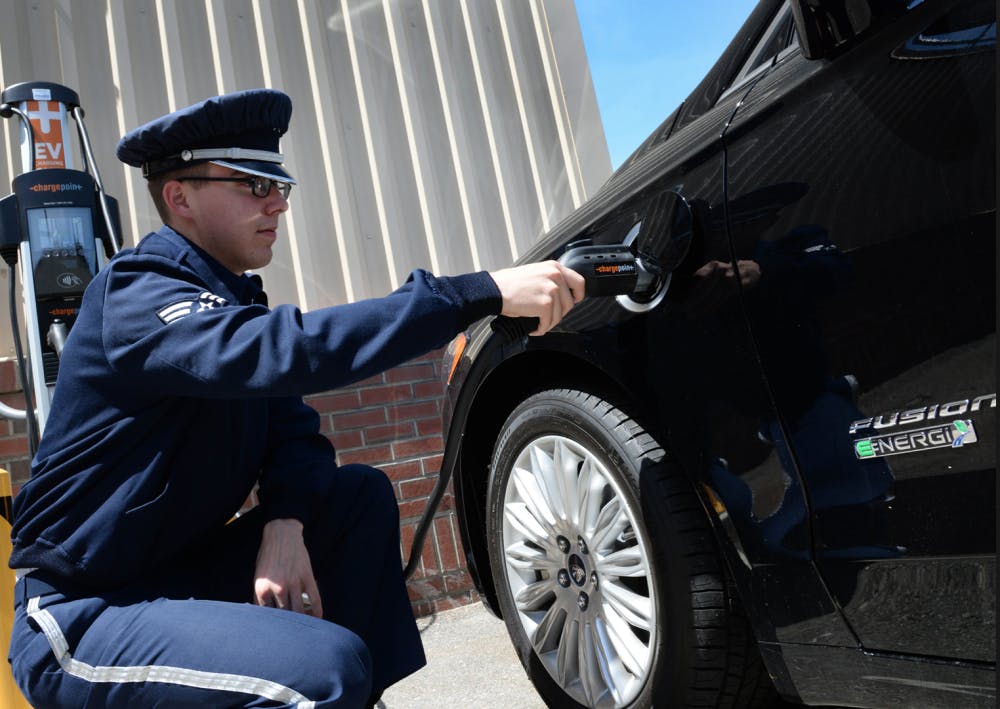By: Archer K Hill II
Earlier this month, Ohio’s new Governor Mike DeWine signed into law a transformative bill that aims to patch up the state’s long-ignored transportation infrastructure, which was left in shambles by his predecessor, John Kasich. The bill—which is mostly comprised of the two-year transportation budget—will result in one of the largest gasoline tax hikes Ohio has ever seen. The state will now collect 38.5 cents per gallon of gasoline, up 10.5 cents from previously, as well as 19 cents more per gallon of diesel, effective July 1st, 2019.Ohioans have been expectedly displeased, with 55 percent of the state opposing it and another 15 percent unsure what to think.Despite this substantial tax increase that is driving drivers crazy, the governor initially fought for more—his “bare minimum” in early negotiations was an 18 cent increase.And it's not only drivers of gas-guzzling vehicles that need worry. For the first time, the state government will legislate an “annual registration fee” for hybrid and electric vehicles (EVs)—$100 and $200 per year, respectively. Ohio will become the 22nd state to impose such a fee.The reason for a registration fee, which is basically a tax, is obvious—green vehicles that use little or no gasoline use the same highways and roads maintained by revenue raised from the state gas tax.Still, as of 2018, green vehicles comprised only 0.74 percent of light vehicle sales in the state of Ohio, and less than 2 percent of sales in the country. In this respect, their effect on the state’s crumbling roads and bridges is minimal. This also means that the contribution of EV registration fees to state transportation revenues will be modest. This will presumably change in the future, if more alternative-fueled vehicles hit the road. However, many environmentally-minded organizations are calling such fees “unfairly punitive” to drivers of EVs. Many worry that they may disincentivize new car buyers from going green.Such concerns are unfounded. In fact, drivers of green vehicles still get plenty of state and federal purchasing incentives in the form of tax credits. They also avoid paying the federal gas tax, which alone amounts to $97 per year saved.Whether or not EV fees are truly ‘fair’ is down to a matter of degree. For example, the state of Georgia, like Ohio, imposes a $200 annual charge on hybrid and electric vehicles. But it differs insofar as the average driver of a traditional gas vehicle pays only $164 in gas taxes to the state. On the other hand, Washington charges EV drivers $150 per year, while gas vehicle owners pay about $261.In terms of proportionality, Ohio’s two-year transportation budget gets it right. In fact, it’s the most proportionate state by far. The $100 hybrid and $200 electric vehicle registration fees are about the same as what the driver of a gas vehicle would pay in a year on state gas tax—roughly $203.Still, EV registration fees, just like gas taxes, are a clumsy, one-size-fits-all attempt to ignore the real question: How do we effectively and equitably tax all drivers relative to their impact on infrastructure in a sustainable way? Neither method comprehensively takes into account the size and weight of a vehicle along with distance traveled, which would provide a more accurate measure. This means that larger, more fuel-efficient vehicles pay far less than they are responsible for, while light-vehicle owners—the vast majority of drivers—pay more than their fair share. Such taxes and fees also disproportionately affect the poor, as they pay a relatively larger chunk of their income and tend to have less fuel-efficient vehicles.Until a more comprehensive method of taxation is found, states will continue to employ easy, inefficient means of taxing vehicles. In the meantime, though, Ohio is one of the few states that is taxing drivers of green vehicles proportionately, if not fairly.Photo by Linda LaBonte Britt

